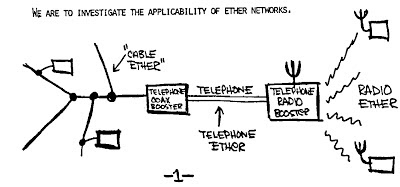Yesterday was the 40th anniversary of the memo that solidified months of theorizing by Bob Metcalfe outlining the invention of Ethernet. Working at the Xerox Palo Alto Research Center (PARC), Metcalfe was inspired by a network that connected a central time-sharing computer in Oahu to other Hawaiian Islands using low-cost commercial radio equipment.
Metcalfe’s goal was to adapt the Hawaiian radio network for “in-building minicomputer communication.” Buy why the name Ethernet? Wanting to keep the mechanism for transmission generic, the memo stated:
“While we may end up using coaxial cable trees to carry our broadcast transmissions, it seems wise to talk in terms of an ether, rather than ‘the cable’, for as long as possible. This will keep things general and who knows what other media will prove better than cable for a broadcast network; maybe radio or telephone circuits, or power wiring or frequency-multi-plexed CATV, or microwave environments, or even combinations thereof.”
His use of the term ether was from luminiferous ether, a 19th century theory on a invisible substance that acted as the transmission medium for electromagnetic waves. This was eventually disproven, in part by Einstein’s theory of relativity.
The PARC experimental network expanded into the DIX standard with the partnership of Digital, Intel and Xerox. Early challenges to Ethernet included difficulties reaching standards and competition from Token Ring and Token Bus also vying to become the IEEE standard. By the late 1980s, Ethernet had become the dominant LAN technology.
Over the last 40 years, Ethernet speeds have increased by an order of magnitude roughly every 10 years: 10Mbps in 1973-83 to 100Mbps in 1993, 1G in 1998, 10G in 2002 and 100G in 2013. The current theoretical speed is 400G. With video increasingly making up the content load and more and more people posting and viewing it, higher speeds will be required. The timeframe for 400G has it being ratified by the IEEE in 2017.
Beyond that? By 2023-24 Terabit Ethernet could be ratified after a study group begins in 2019-20. Then 10T Ethernet 10 years after that, followed by 100T, and then Petabit Ethernet some 80 years after Ethernet’s invention in a Xerox memo.






